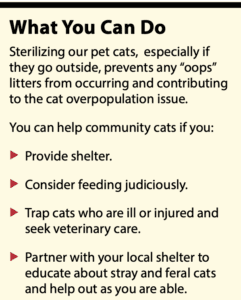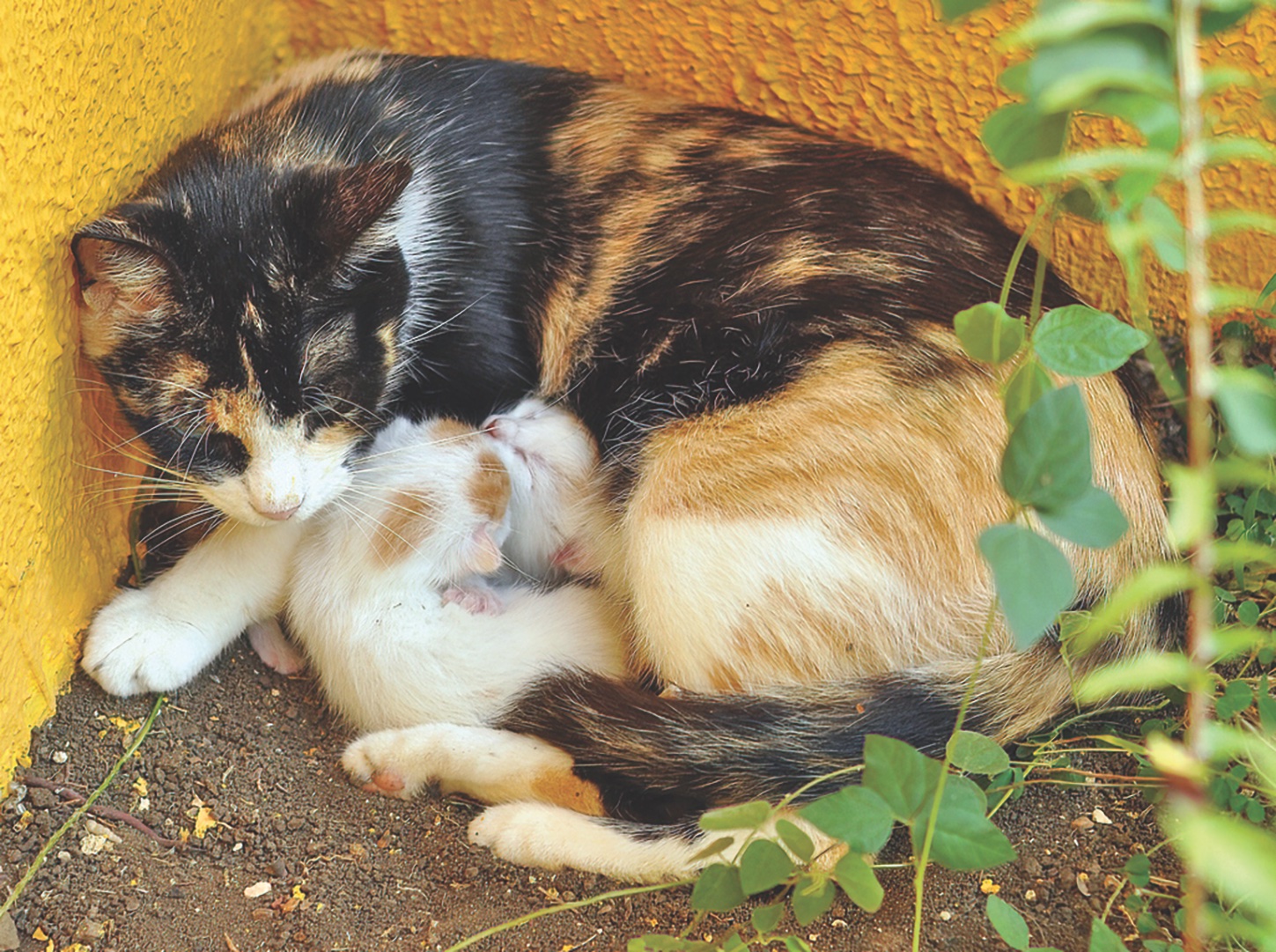You have probably heard of “kitten season,” which is the six months when kittens seem to fall from the sky. OK, that is a bit exaggerated, but from May through October, stray and feral queens produce many kittens. Sooner or later, you may encounter one of these little families and wonder how—or if—you should help.
Let the Tiny Kittens Be
“If you find a nest of tiny kittens with closed ears or eyes on your property or public spaces, if at all possible, leave them where they are,” says Lena DeTar, DVM, board-certified shelter medicine veterinarian and interim director of Maddie’s Shelter Medicine Program at Cornell University’s College of Veterinary Medicine.
This might seem counterintuitive at first. However, the best caretaker for tiny kittens is their mother. Stray cats—and even more so ferals—are wary of human intruders and likely to hide or flee if a human comes near their den. Even though you may not see her, the queen is likely close by. It is better to leave these kittens in their mother’s care than to take on the hard work of bottle feeding around the clock unnecessarily.
Intervene at 4 to 5 Weeks Old
The optimal time to intervene with a feral litter of kittens is after they turn 4 weeks old. By this age they will be mobile with open eyes and ears. These kittens are no longer fully dependent on their mother for food and care, and are able to be transitioned to “regular” food.
Kittens also go through a socialization period from 5 to 10 weeks of age. During this time, they are more curious about the world and open to new things, making it the perfect window of time to introduce them to human care. Older kittens will be more wary and less likely to thrive as pets.
The goal of intervention is to limit the population of unowned cats. Taking in the kittens gets them off the street and is the first step toward getting them into loving homes. But what about mom?
“Intervention should always include calling your local shelter in advance and setting a trap for the mother cat, so she can get spayed/neutered and put back,” says Dr. DeTar. “Otherwise, you’ll just be in exactly the same situation three to four months from now.”
The queen may be able to be adopted if she is friendly to humans, but feral queens usually have a deep mistrust of humans. Spaying her will prevent her from having future litters, but after that she can return to the life she knows.
Arranging Care
Have a plan for the mama cat and kittens before you do anything. If you are able to, and mom is friendly, foster the litter yourself. “Keep mom and kittens safe and warm and at your home until they are 8 weeks of age,” says Dr. DeTar. At 8 weeks old, the kittens can go to new homes.
If you are not up to rehoming the kittens yourself, you can take them to a shelter. “Call the shelter you plan to surrender them to several weeks in advance,” says Dr. DeTar. This gives the shelter time to prepare for the incoming litter, or to let you know if they do not currently have sufficient resources.
Support for Fosters
Fostering a litter of kittens requires time, space, and materials. If you are blessed with all three, the kittens and your community would appreciate you fostering the litter yourself. However, this is not the reality for many of us.
Shelters and rescues also struggle with these resources, but teaming up with an established shelter can be a perfect fit. For example, even if a shelter is well funded, they may lack the space or staff to provide adequate care, prevent disease, or socialize a litter of kittens. Shelters are usually delighted to help support people interested in giving their time and space in their homes to foster.
Reach out to your local shelters, rescues, and veterinary clinics to see what help is available in your community for fostering kittens.
Two excellent resources to learn about safely and humanely trapping stray and feral cats and caring for kittens are:
Alley Cat Allies (alleycat.org) can help connect you to cat lovers in your area who are experienced with trap-neuter-return (TNR) and can teach you how to trap cats as kindly as possible. They also have a directory of low-cost veterinary care and animal food banks.
“Kitten Lady” Hannah Shaw (kittenlady.org) has free webinars on all things kitten from assessing age to determining whether a litter needs assistance to bottle feeding and evaluating kitten poop. If you are considering fostering kittens of any age, these materials are a must.
Does This Kitten Need Help?
Kitten Lady has a clever way to remember which kittens need assistance and which ones are fine where they are. She calls this the CASA method:
C – Condition
A – Age
S – Situation
A – Ability
Condition: A kitten in good condition should be clean, well-fed, and appear healthy and calm. This kitten is not in need of immediate assistance, and if under 4 weeks of age, should be left in the care of its mother.
A kitten in poor condition will be underweight, dirty, distressed, covered in parasites, and/or show signs of illness such as a nasal discharge, runny eyes, or a cough. This kitten needs help and care.
Age: Kittens under 5 weeks old should be kept with their mother. If you are able to trap the whole family, great! But otherwise, leave them as they are so the queen can continue to care for them.
Kittens between 5 and 10 weeks of age are able to eat food and are in the socialization window that makes them able to adapt to life with humans. These little guys can be caught and rehomed or turned in to a rescue.
Kittens over 10 weeks of age may be taking on the same behavioral traits as their feral parents. In many of these cases, trap-neuter-return is best.
Situation: Consider where you found the kitten(s). Is it a relatively quiet area, with food, water, and shelter available? If so, they are likely safe where they are under the care of their mother. However, if there are obvious threats such as construction, a busy roadway, or roaming dogs, the litter may need to be relocated.

Ability: Your ability to help the kittens comes into play, too. Are you able to take in and house a stray, possibly feral, cat and her kittens for several weeks? Have you communicated with a shelter or rescue that is able to help you or take them on? Always wait to trap kittens or their mother until you have a solid plan for their future to ensure that they will be safe and healthy.
Supporting the Queen
The adult members of your stray cat family require attention, too. After all, where there are kittens, there are adult cats. Whenever possible, it is critical to trap-neuter-return the adult cats so that they will no longer reproduce. Friendly strays who are socialized to humans may be able to be rehomed, but true feral cats are happiest living their outdoor lives.




